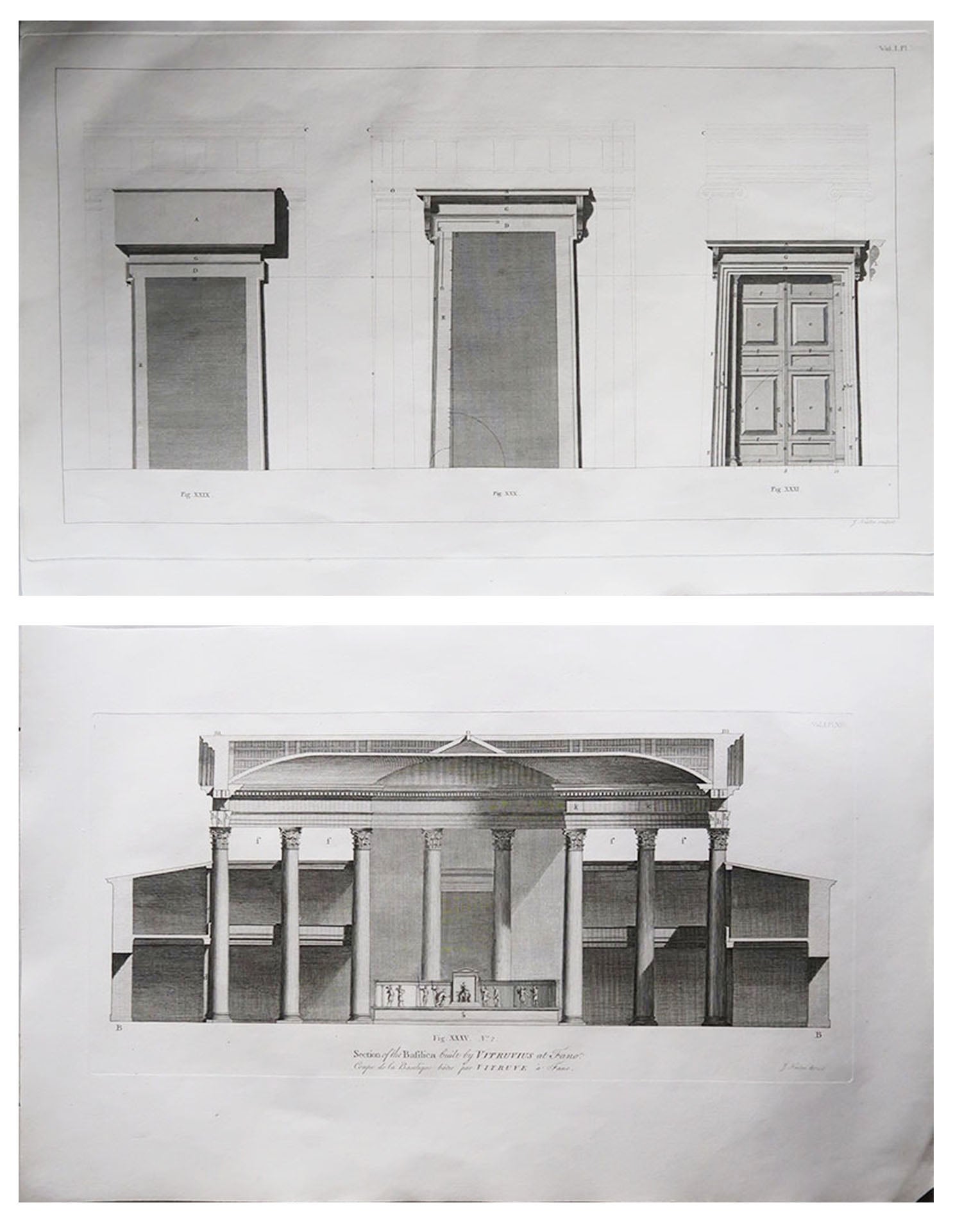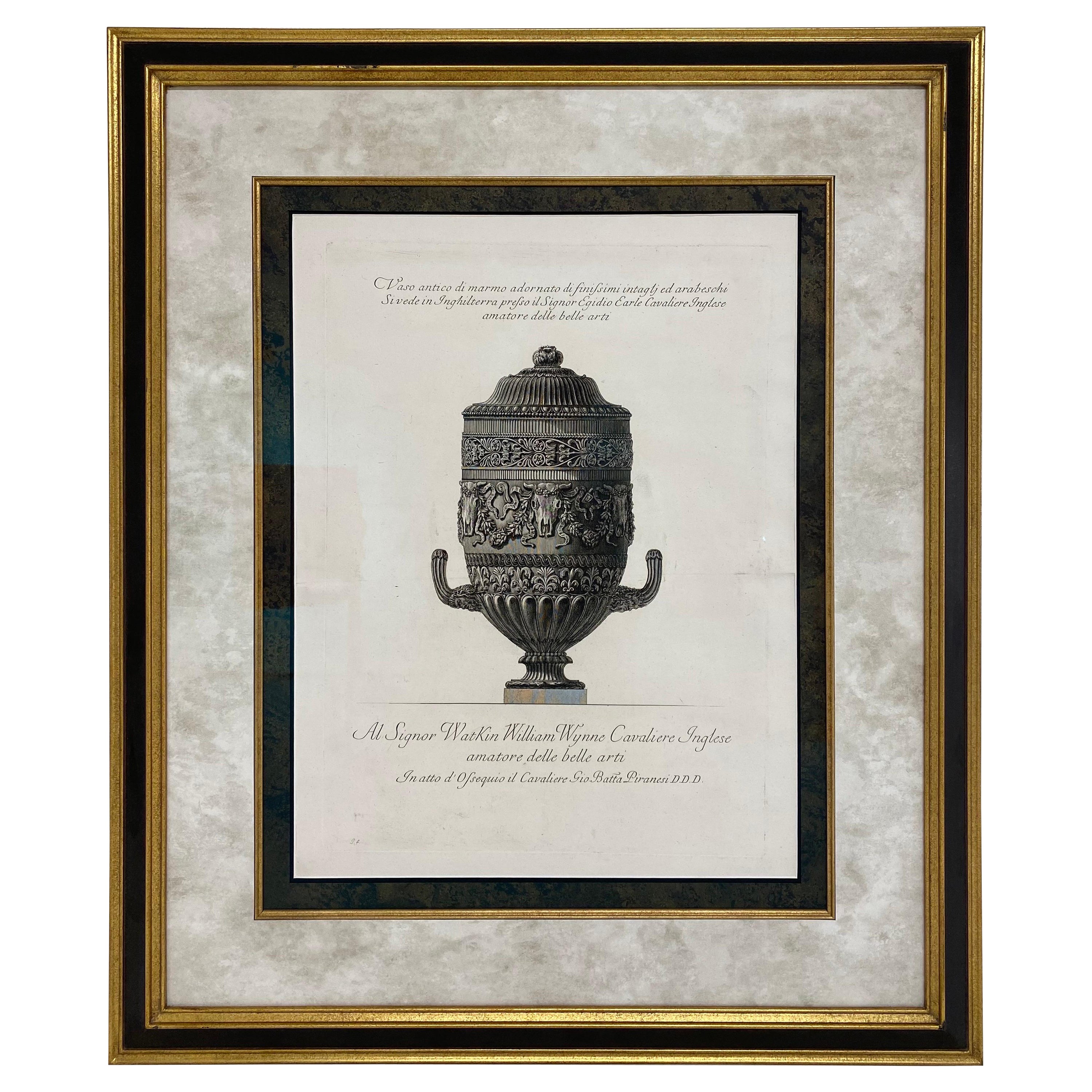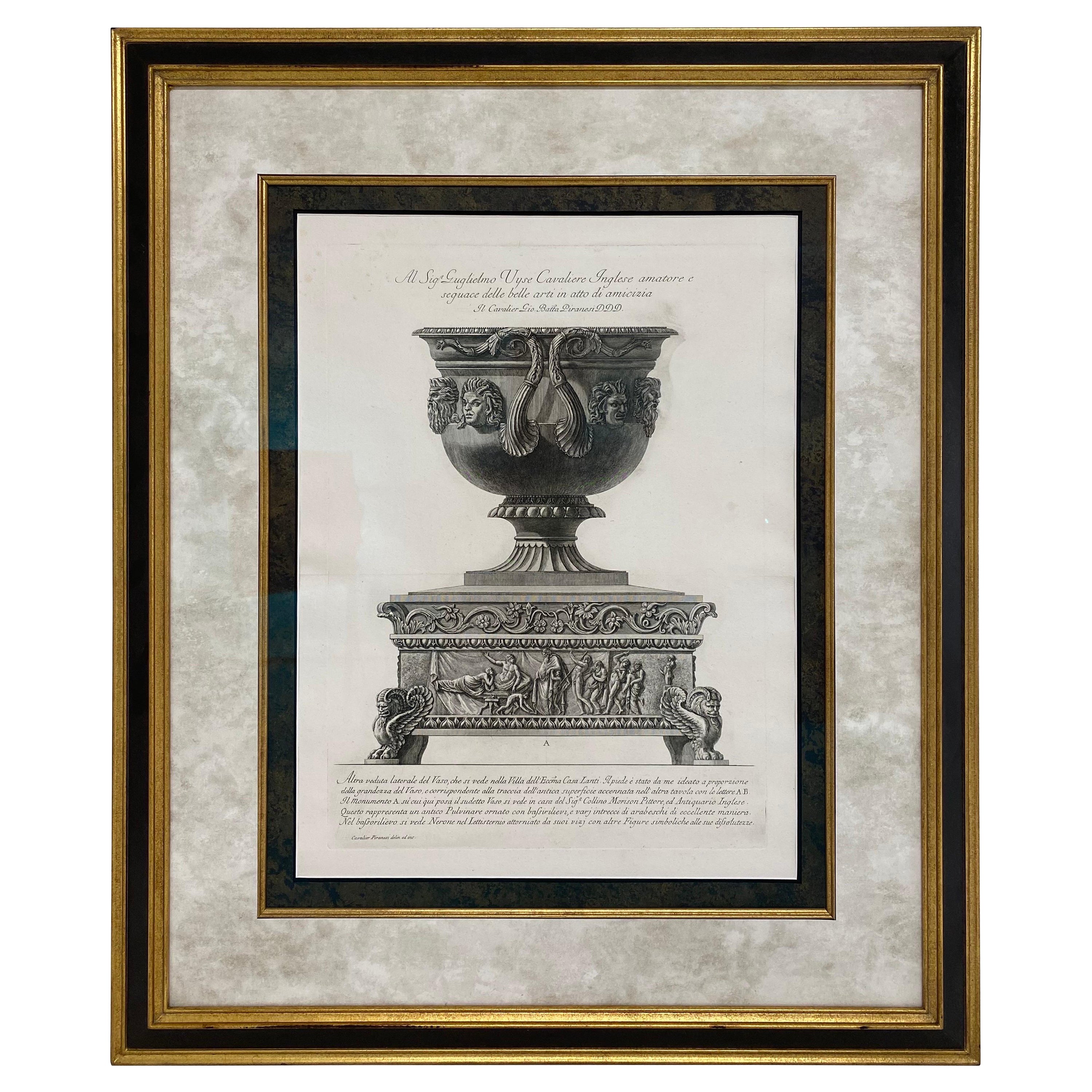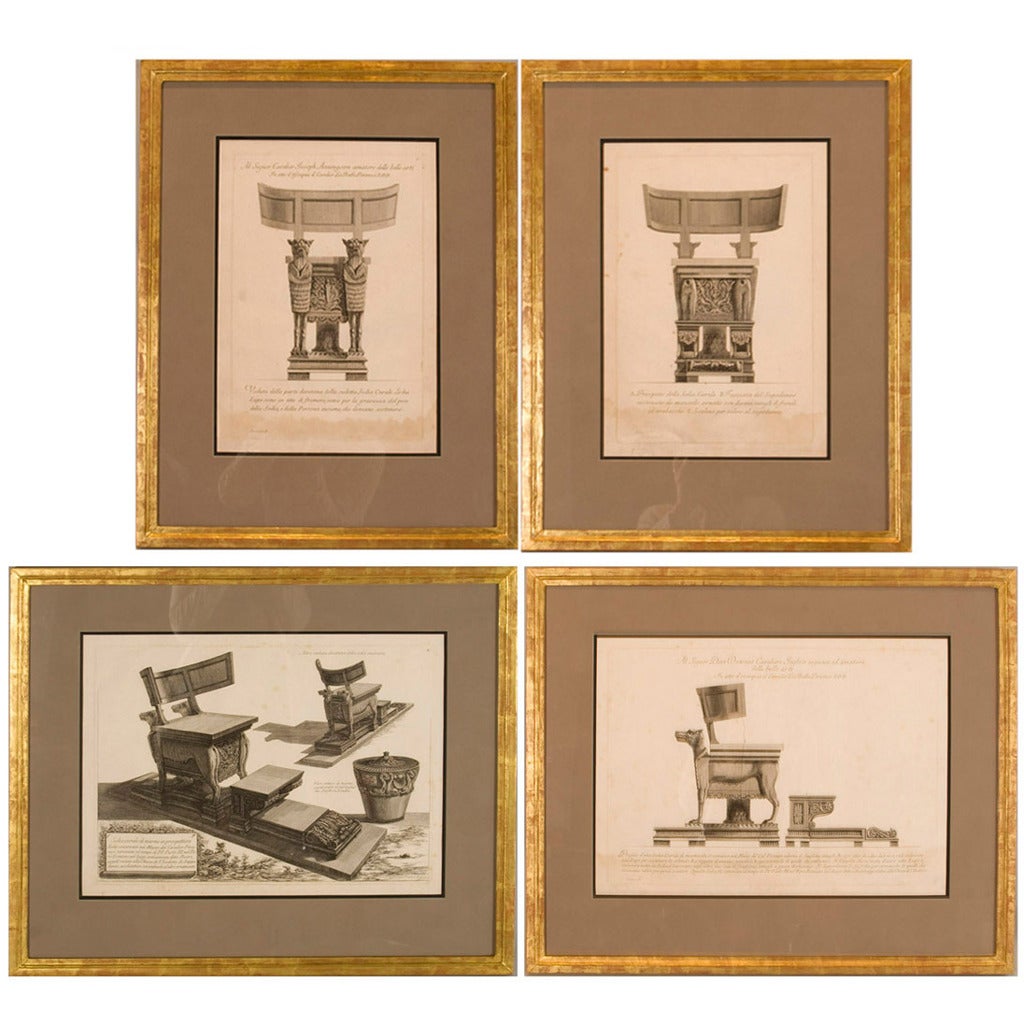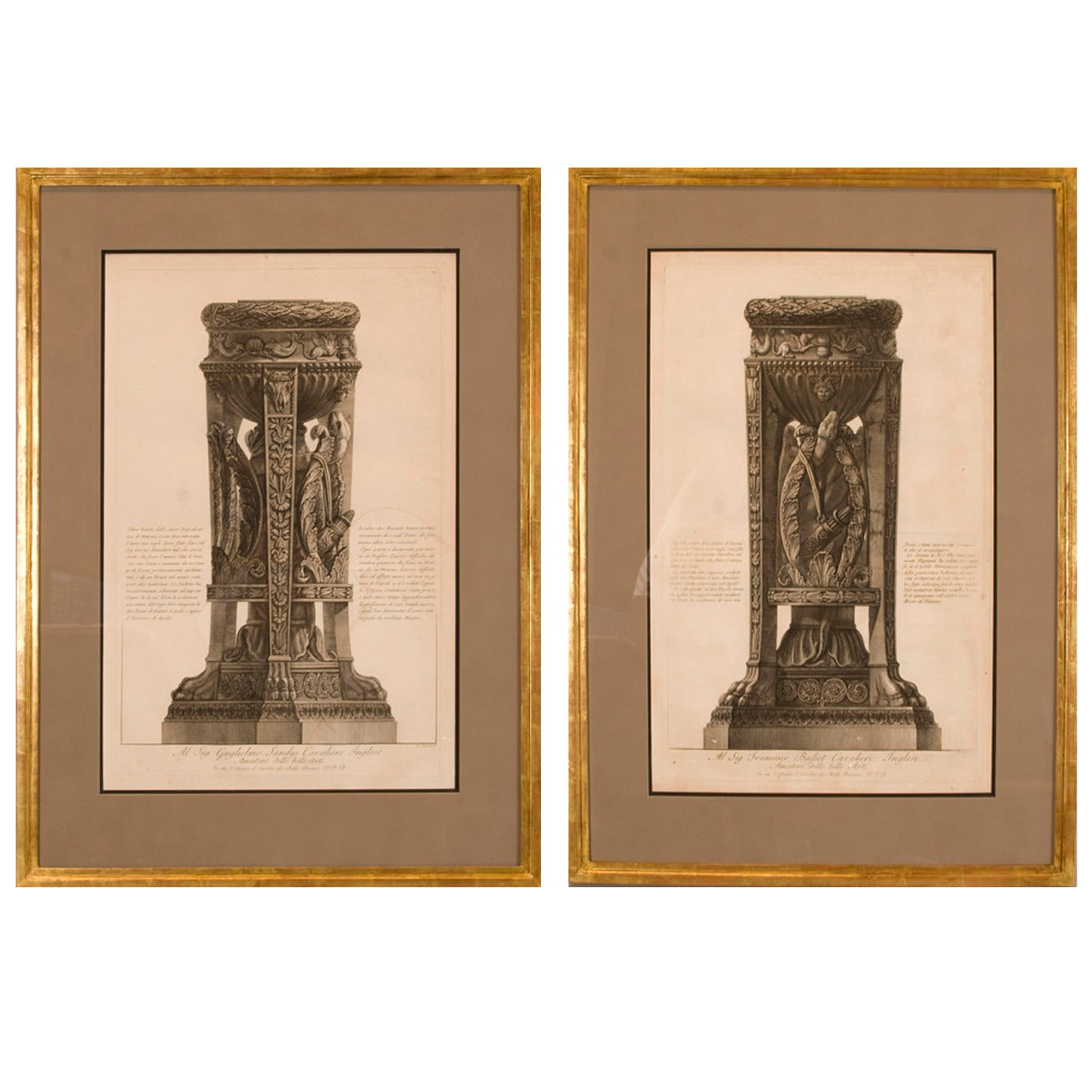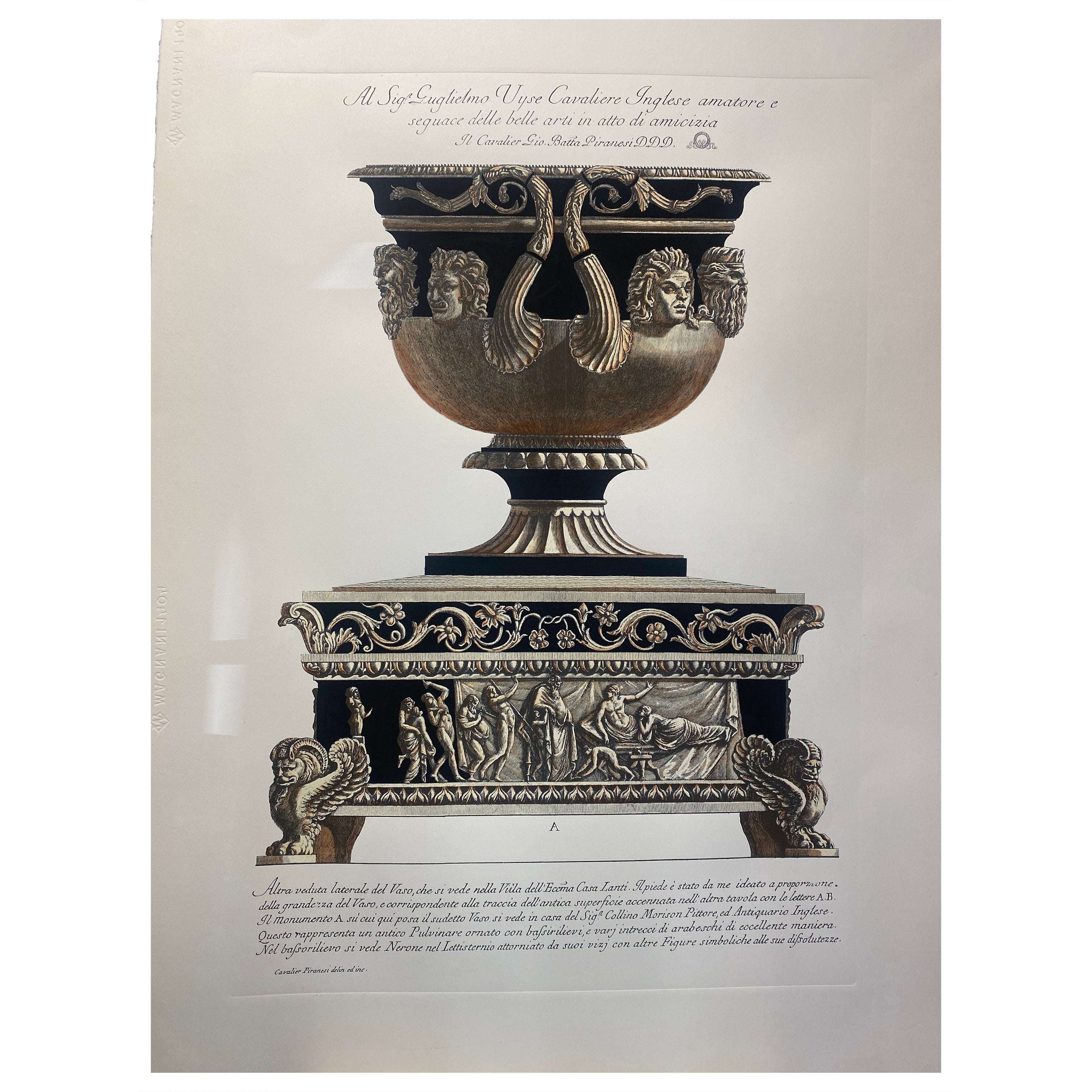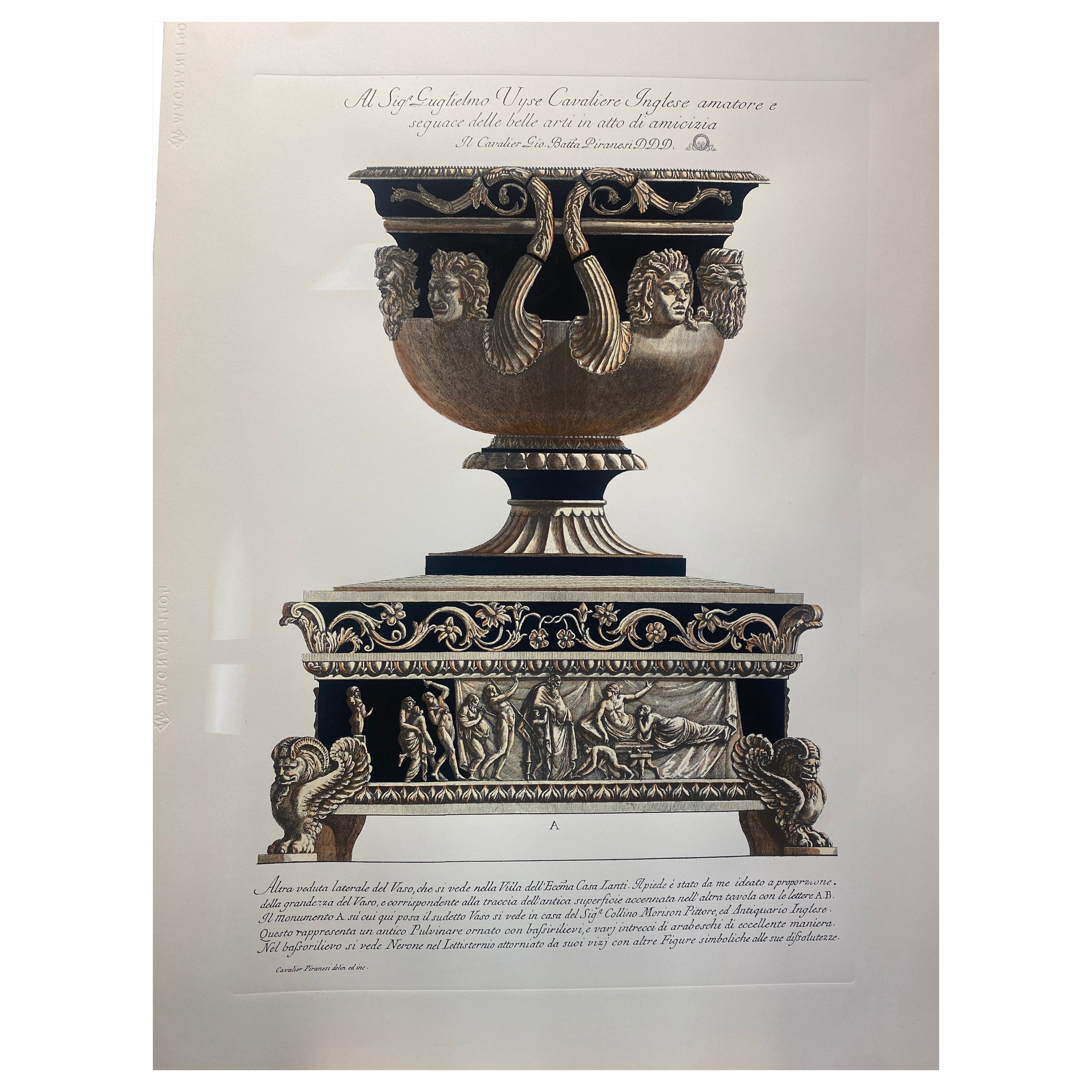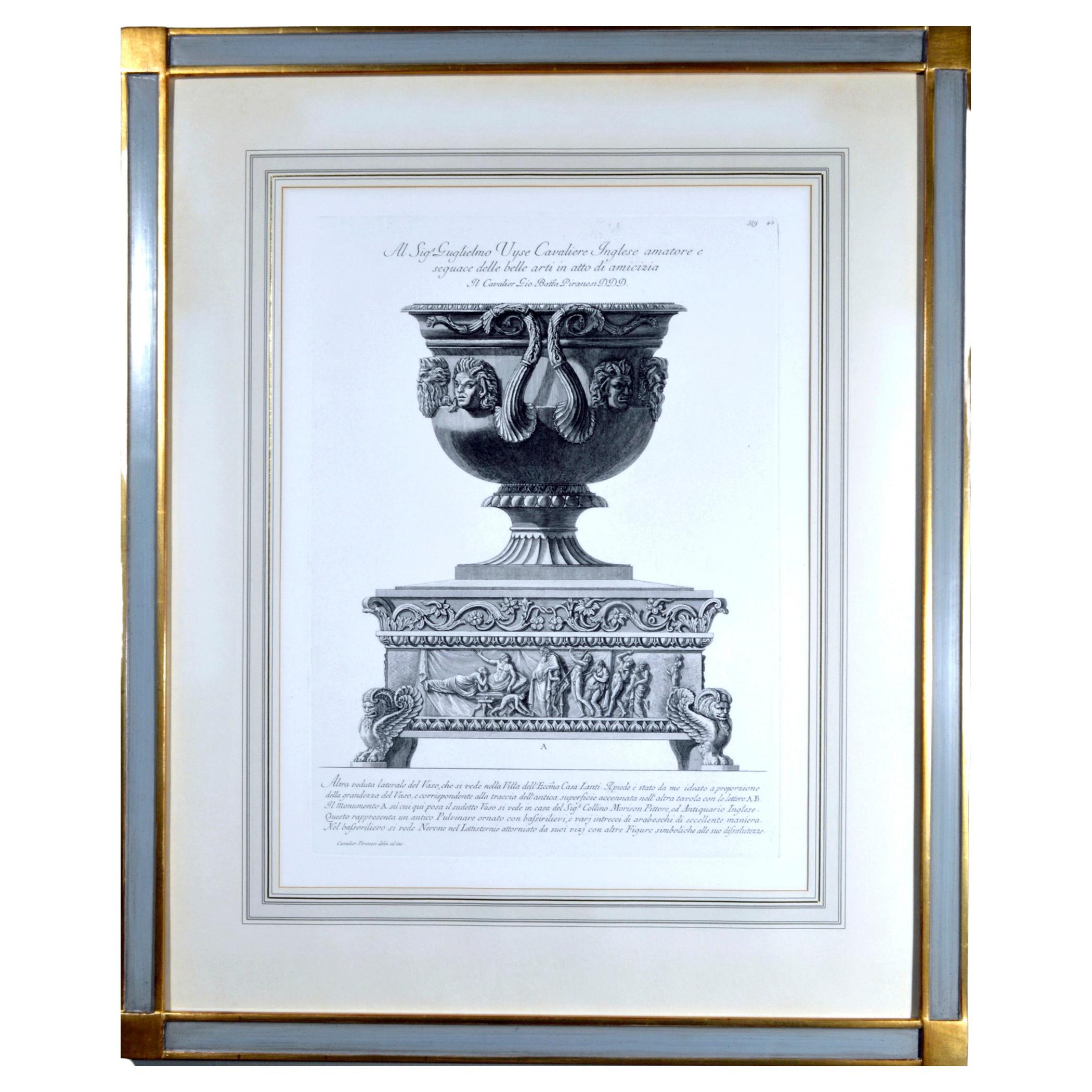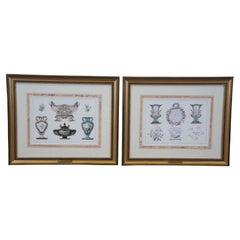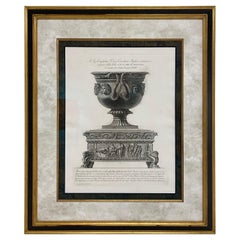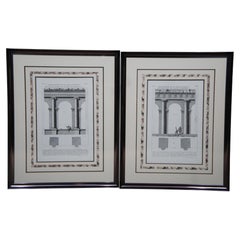
2 Giovanni Battista Piranesi Reproduction Roman Architecture Prints
View Similar Items
Want more images or videos?
Request additional images or videos from the seller
1 of 13
2 Giovanni Battista Piranesi Reproduction Roman Architecture Prints
About the Item
- Creator:Giovanni Battista Piranesi (Artist)
- Dimensions:Height: 29.5 in (74.93 cm)Width: 23.5 in (59.69 cm)Depth: 1.5 in (3.81 cm)
- Sold As:Set of 2
- Style:Classical Roman (In the Style Of)
- Materials and Techniques:
- Period:
- Date of Manufacture:Late 20th Century
- Condition:Very Good.
- Seller Location:Dayton, OH
- Reference Number:Seller: 365921stDibs: LU5343233520602
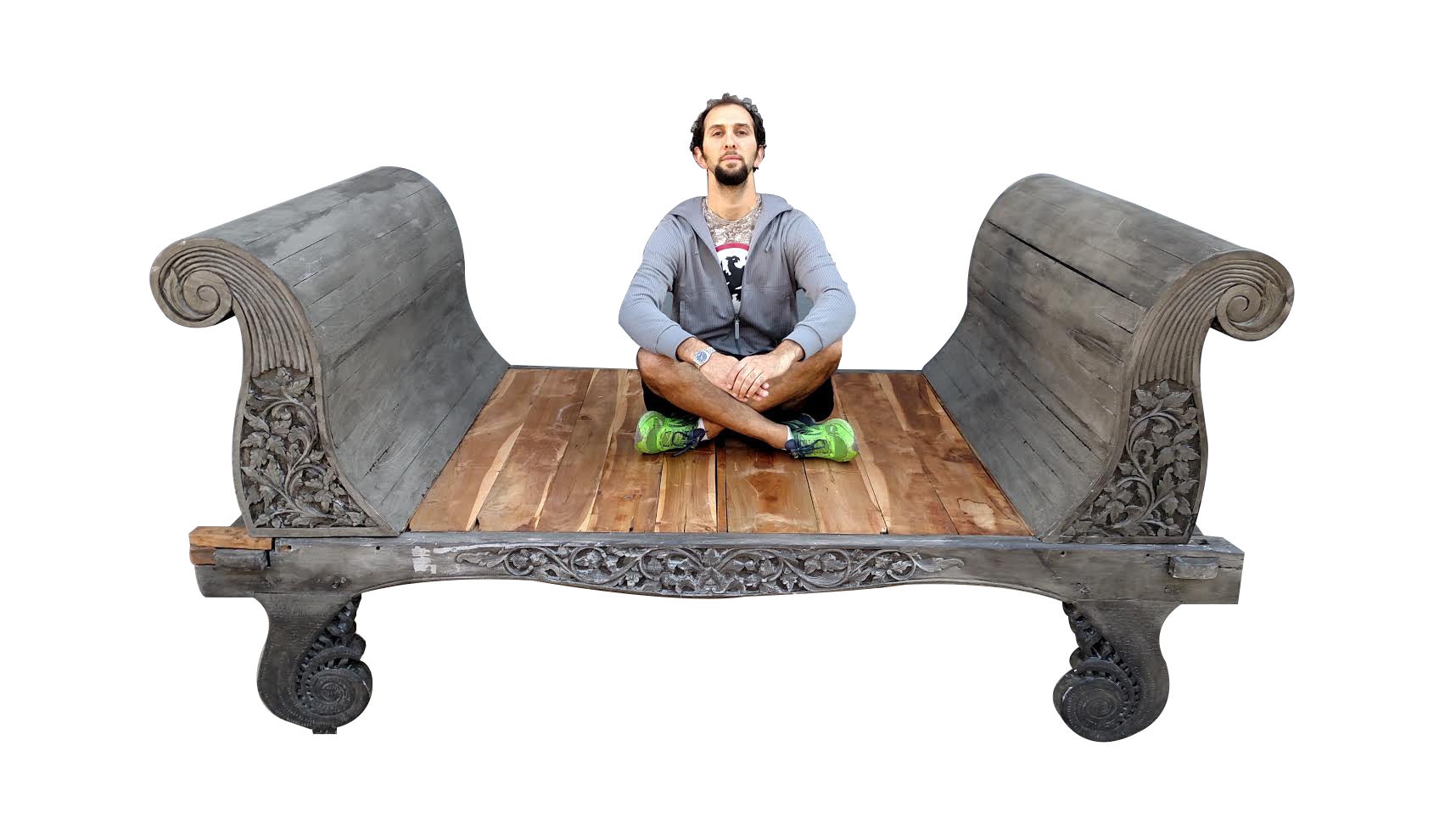
About the Seller
4.9
Platinum Seller
These expertly vetted sellers are 1stDibs' most experienced sellers and are rated highest by our customers.
Established in 2010
1stDibs seller since 2020
1,109 sales on 1stDibs
More From This SellerView All
- 2 Vintage Reproduction Edouard Garnier Porcelain of Sevres Prints by DenunzioLocated in Dayton, OHA beautiful pair of prints Titled "The Porcelain of Sevres" after Edouard Garnier. Reproduced by Denunzio in last quarter of the 20th century. Neatly framed in gold with plaque. ...Category
Late 20th Century French Provincial Prints
MaterialsPaper
- Giovanni Ottaviani Le Logge Di Raffaello Hand Colored EngravingBy Giovanni OttavianiLocated in Dayton, OHGiovanni Ottaviani (1735-1808) Le Logge di Raffaello Hand Colored Engraving "2 joined copper plate engravings with later hand colouring ""Loggie di Raffaelo nel Vaticano"" by Giov...Category
Antique 18th Century Renaissance Prints
MaterialsPaper
$990 Sale Price44% Off - Antique Architectural Press Cathedral Cityscape Etching After Frank BrangwynBy Frank BrangwynLocated in Dayton, OH"Antique cityscape print “From an Etching by Frank Brangwyn, R.A. A.D. 1922 by The architectural Press. “Frank Brangwyn was born in 1867 in Bruges, Belgium. His family moved back to London in 1875 where he attended school until 1879, when he left as much out of boredom as necessity. His father worked as an architect, muralist, and in other arts-related crafts. Frank helped around the studio and continued his own artistic education by copying drawings at what was to become the Victoria and Albert Museum. His abilities attracted the notice of more established artists and at the age of 15 he was working for William Morris getting rudimentary training and preparing designs for many aspects of Morris' Arts and Crafts output. In 1885, with nothing much more than youthful enthusiasm, he submitted a painting to the Royal Academy Summer Exhibition and was accepted - at the age of 17. Spurred by this success he rented a studio and began a period of productive poverty. With little money, his early work revolved around the sea where traditional subjects for British art were moored and made docile models. This is considered his """"""""grey"""""""" period and the limited palette may be due as much to limited funds as to artistic intent. His 1890 canvas, """"""""Funeral At Sea"""""""" is typical of this period and won a Gold Medal at the 1891 Paris Salon. The young artist was making waves. In 1888, he worked on a freighter for passage to the Near East of Istanbul and the Black Sea. Orientalism was a major force in European art at the time and Brangwyn was as seduced as many artists were with the colors and light of the Mediterranean and African coasts. These trips brought a new palette to his work and something new to British art. The Buccaneers, at right, is from 1892 and the difference between it and his """"""""grey"""""""" period is dramatic. Just as we have movie critics today, art critics proliferated during the 19th century. Walter Shaw Sparrow, in his excellent """"""""Frank Brangwyn and His Work"""""""", devotes several chapters to the reaction of these critics to Brangwyn's art. Opinions were as varied as the two styles shown here, but what is most interesting is the degree of attention being paid to the work of a self-taught 25-year old. Whatever their views of his work, he was not being taken lightly. Not surprisingly, the bright hues and intense light of his new style were not appreciated by the establishment. To put his work in historic perspective, this was a period of Impressionism, Art Nouveau, and the Munich and Vienna Secessions. In British art, Sargent, Whistler, Waterhouse and Draper were popular. Lord Leighton, Burne-Jones and Alma-Tadema were still active. Brangwyn was following none of these men and the critics were at a loss as to how to pigeonhole him. The continental critics in France, Munich and Vienna had no such trouble. He was seen as a most modern and successful artist from the beginning. For his part, Brangwyn followed his own muse and in doing so found himself at the vanguard of the art world. In 1892 he began working as the designer for the new art magazine, """"""""The Graphic"""""""". In 1895 he was asked to paint murals for the notorious gallery, L'Art Nouveau, in Paris. He won medals for his work in Munich and Paris. At the age of 30, while Britain puzzled over how to evaluate his work, the rest of the world viewed him as the definition of modern British art. He illustrated books: """"""""Don Quixote...Category
Vintage 1920s Prints
MaterialsPaper
- 4 Alvar Sunol Renaixent Renaissance Embossed Surrealist Lithograph PrintsBy Alvar Sunol Munoz-RamosLocated in Dayton, OHSuite titled “Renaixant” (Renaissance) of four framed, original and embossed lithograph prints on Arches by Alvar Sunol Munoz-Ramos, pencil signed and numbered 122/185. circa 1977. Featuring surrealist scenes with gothic architecture and ghosts / angels / muses / musicians and doves. Alvar is known for his technical expertise. He is passionate about his concept of el oficio, the commitment to his vocation and appreciation for the traditional artistic values bequeathed by the masters. Renaissance artists, especially Piero della Francesca, Vermeer and Balthus, are particularly admired by him. He views his work as an inheritance from and devotion to Catalonia, specifically Romanesque art, yet imbued with a modern sensibility. His themes, though varied, remain steadfast in their revelations about the human condition and complexities, about love and peace. Time is a prominent and recurring theme, referencing history and art history. Alvar Suñol Munoz-Ramos was born on January 29, 1935, in Montgat, a Catalan fishing village on the Mediterranean coast near Barcelona. He started painting oils at age twelve, and at age seventeen was accepted at the Escuela Superior de Bellas Artes de San Jorge, the prestigious fine art school in Barcelona. Before graduating from the Belles Artes, he gave his first solo ex- hibition at Galleries Layetana in Barcelona in 1957. Alvar also won the Bolsa de Viaje Alhambra de Granada, a summer scholarship study trip to Granada. At age 18, he entered a painting in a competition for the Young Painters Prize sponsored by the City of Barcelona. His painting won the grand prize, and it is now in the permanent collection of the Museum of Modern Art, Barcelona, Spain. Due to his early artistic successes, Alvar received many invitations for shows in other Spanish cities. During his military service, he submitted one of his canvases for the Institut Francais an- nual painting competition in Barcelona. The Institut Francais awarded him the grand prize and a scholarship to study in Paris. Alvar arrived in Paris to paint in 1959. He met Juan Fuentes, a fellow Spaniard and director of the prestigious Parisian Galerie Drouant. Fuentes encouraged Alvar in his painting and brought Alvar's first group of Paris oil paintings to the gallery. Fuentes' gallery sold the paintings in one week. In 1960 Alvar returned to Barcelona to marry his childhood sweetheart, Rosella Berenguer. They returned to Paris and lived there for ten years. Alvar's paintings were exhibited in the United States for the first time at the Monede Gallery, New York in 1962. Alvar produced his first original lithographs for a one-man show at Galerie Drouant in 1963. Since a decisive solo exhibition in Paris in 1963, Alvar has exhibited regularly throughout Europe, the United States, Canada and Japan. For a comprehensive list of Alvar's museum and private exhibitions, please see the additional in- formation provided. Alvar's hometown of Tiana hosts one of his permanent public installations. In September 2001, a commissioned mixed media mural by Alvar was unveiled. The mural reflects on the four seasons and is affixed to The Four Seasons Building, named in reference to Alvar's mural. In 2003, city officials in Montgat, Spain, commissioned Alvar to create another permanent public installation: an 18-foot sculpture titled Mediterranea dedicated to the city's personality and seaside character, which now stands in the newly opened Plaza de Mallorquines. Perhaps one of the most prestigious honors Alvar has received was in 2006 when Restaura, a Spanish real...Category
Vintage 1970s Renaissance Prints
MaterialsPaper
- Antique John Gould Ornithological Myiabeillia Hummingbird Lithograph PrintBy John GouldLocated in Dayton, OH"Antique mid to late 19th century colored lithograph print of Myiabeillia typica (Abeille's Hummingbird) drawn by John Gould, lithographed by H.C. Richter, printed by Hullmandel & Walton. From A Monograph of the Trochilidae, or Family of Hummingbirds, published in London circa 1849-61 (supplement printed 1880-87). “John Gould was a prolific illustrator of ornithology and was noted for the beauty of his illustrations. During his lifetime he was responsible for the illustration of over 2,200 different species of birds from around the world. The work for which he is best known is his Monograph of the Trochilidae or the ""Family of Hummingbirds"", which was produced between 1849-1861. Each hand-colored lithograph, many of which are highlighted with shimmering iridescence, presents the tiny jewel-like birds visiting lush flowers and foliage.” “Henry Constantine Richter (7 June 1821 – 16 March 1902) was an English zoological illustrator who produced a very large number of skillful coloured lithographs of birds and mammals, mainly for the scientific books of the renowned English 19th century ornithologist John Gould. Many of the original drawings used by Richter as the basis for his coloured lithographs were by Gould's wife, Elizabeth Coxen, produced before her death in 1841.[1][2] Richter's reputation was overshadowed by that of his much-celebrated employer. Since it was not customary to acknowledge illustrators alongside authors in the titles of publications, his name was forgotten. But in 1978, his great ability and the extent of his contribution to Gould's work came to light, in the work of the researcher Christine E. Jackson.” “Hullmandel & Walton – Lithographic printers, in London. According to BBTI this partnership operated from 1818...Category
Antique 19th Century Unknown Prints
MaterialsWood, Paper
- 2 Antique Framed Silhouette Lithograph Prints Brown Kellogg Forsyth MacombLocated in Dayton, OH"Two antique lithograph silhouettes of John Forsyth and Alexander Macomb taken from life by William Henry Brown and produced by E.B. & E.C. Kellogg. William Henry Brown and his wife, Emmaline, left Philadelphia around 1859 and settled in a small railraod community of Saxton near Altoona, PA. He had gone there to work on the railroad, since photography had put him out of work. By 1865 he had moved to Erie, PA and was married to Margaret Horrell. They had two sons. She died shortly thereafter and he moved to Wilcox near Kane, PA. Later he lived with a niece in Georgia then married a third time to Sarah Conrad. After her death he returned to South Carolina. Connecticut Historical Society still has the 6 foot silhouette of the ""Dewitt Clinton"" locomotive he had done in 1831. They also have 14 prints he gave them in 1853 of silhouettes that are not part of the Portrait Gallery. A traveling artist, William Brown was a portrait painter and silhouettist, whose subjects were distinguished persons, especially in Philadelphia, New England, and Charleston. Brown was especially noted for a series titled ""Portrait Gallery of Distinguished Americans"", published in 1846 as a book of lithographs from his full-length silhouettes. Also included were biographies of the subjects. He was born in Charleston but spent more time in Philadelphia than in the South. He trained as an engineer but in the early 1830s, devoted himself increasingly to art. He first worked in New England and then went South, spending much time in Charleston in the 1840s and early 1850. In 1842, he was in Natchez, and he was also in St. Louis and New Orleans. However, by the late 1850s demand for his work had lessened, and he returned to being an engineer, first in Philadelphia and then in Charleston where he died in 1883. John Forsyth Sr. (October 22, 1780 – October 21, 1841) was a 19th-century American politician from Georgia. He represented the state in both the House of Representatives and the Senate, and also served as the 33rd Governor of Georgia. As a supporter of the policies of President Andrew Jackson, Forsyth was appointed secretary of state by Jackson in 1834, and continued in that role until 1841 during the presidency of Martin Van Buren...Category
Antique Late 19th Century American Classical Prints
MaterialsPaper
You May Also Like
- Giovanni Battista Piranesi EngravingBy Giovanni Battista PiranesiLocated in Winter Park, FLA large 19th Century engraving by Giovanni Battista Piranesi depicting the decoration on the leg armor worn by a Roman gladiator. The illustration includes masks and emblems of Bacch...Category
Antique 19th Century French Baroque Prints
MaterialsPaper
- Giovanni battista piranesi large copper plate etchingBy Giovanni Battista PiranesiLocated in Allentown, PAThis is a Giovanni Battista piranesi copper etching. Giovanni did these copper plates in the 1770s and these prints are a restrike from Rome using those copper plates. This etching o...Category
1990s Italian Neoclassical Prints
MaterialsPaper
- Giovanni Battista piranesi large copper plate etching.By Giovanni Battista PiranesiLocated in Allentown, PAThis is a Giovanni Battista Piranesi copper Etching. Giovanni made these copper plates in the 1770s and these etchings are a restrike from Rome using those copper plates. This etchin...Category
1990s Italian Neoclassical Prints
MaterialsPaper
- Copper Plate Engravings by Giovanni Battista PiranesiBy Giovanni Battista PiranesiLocated in San Francisco, CASet of etchings of views of a Greek ceremonial klismos chair. In his fifties, G.B. Piranesi was interested in archaeology and studied in Southern Ita...Category
Antique 1770s Italian Neoclassical Drawings
MaterialsWood, Paper
$7,000 Sale Price / set30% Off - Trajan's Column Plates X and XI by Giovanni Battista PiranesiBy Giovanni Battista PiranesiLocated in Dallas, TXTwo framed original 18th century relief prints of views of the main facade of the Trajan's column in Rome by the Italian artist Giovanni Battista Piraneis (1720-1778). Each print in...Category
Antique 18th Century Italian Neoclassical Prints
MaterialsPaper
- Copper Plate Engravings by Giovanni Battista PiranesiLocated in San Francisco, CAG. B. Piranesi in his fifties was interested in archaeology and studied in Southern Italy where he produced drawings of Greek architecture. Medium: Etching on laid paper. Year: circa...Category
Antique Late 18th Century Italian Classical Roman Drawings
MaterialsGiltwood, Paper, Glass
Recently Viewed
View AllMore Ways To Browse
Reworked Vintage
Italian Remnant
Ancient Roman Column
Venetian Column
Theater Wall Light
Venetian Fantasy
Antiquities Etching
Piranesi Columns
C Lazarus
Piranesi Prints Carceri
Two Door Painted Glass Cabinet
Italian Wave Chairs
Pink Iridescent
Retro Metal Dining Table And Chairs
Georgian Mahogany Commodes
18th Century Swan
Golden Chest
Mahogany Dining Table Century Furniture Chairs

